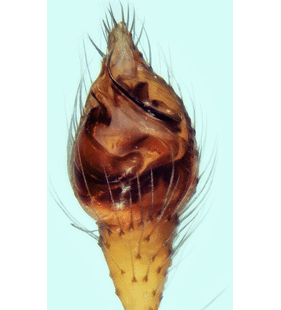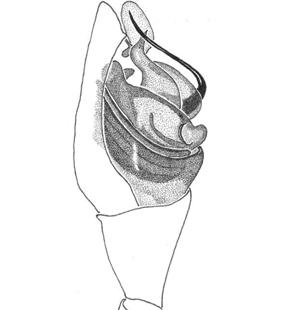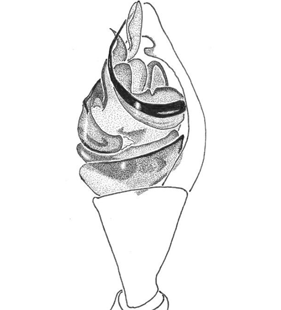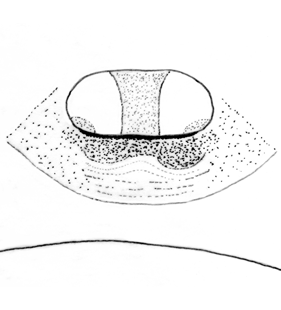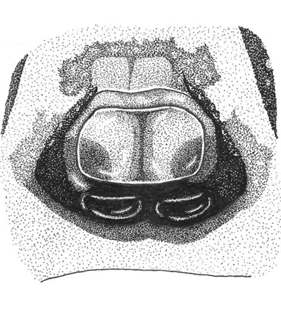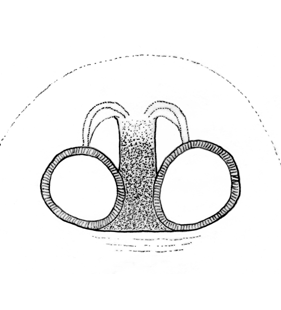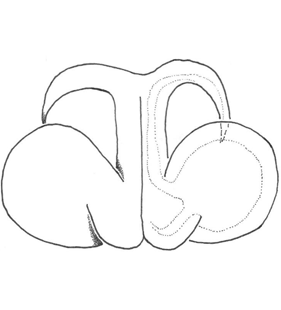Steatoda ifricola Lecigne, Lips, Moutaouakil & Oger, 2020
Beschreibung
Männchen
Prosoma: with distinct granulation; chelicerae relatively slender, armed with one discrete promarginal tooth.
Opisthosoma: with indistinct pattern, general cream colouring, with three more or less distinct median white spots, a brown band on the flanks running backwards over the spinnerets, ringed with brown; ventrally, a white spot behind the epigastric furrow surrounded by a dark band.
Palp: cymbium distinctly longer than palpal tibia; bulbus with two tegular apophyses, TTA 1 at prolateral side, very wide at the base, relatively short, barely extending beyond the distal edge of the bulbus, curved, the terminal part slightly pointing ventrally; TTA 2 at retrolateral side, base wide, extending below the embolus by a thin curved lamellar projection; embolus curved and almost reaching tip of cymbium; conductor membranous, ovoid in lateral views, with bluntly rounded tip reaching tip of cymbium; retrolateral distal edge of alveolus with internal projection.
Körperlänge Männchen: 3.3–3.5 mmWeibchen
Prosoma: smooth, cephalic part with long setae.
Opisthosoma: purple, dorsally with a white anterior belt and several series of white spots (one median line of three spots almost touching, two lateral lines consisting of three clearly separated spots, laterally one line of two spots, sometimes less clearly visible); ventrally, a
white spot behind the epigastric furrow.
Epigyne: consisting of a large atrium wider than long, no septum, internal median structure visible through integument; posterior edge of
epigynal plate dark brown, forming a strongly sclerotized rim that not reach the epigastric furrow.
Vulva: spermathecae round, blackish and massive, separated by
a wide sclerotized median structure, anteriorly with an arch
made up of two segments.
Zusätzliche Informationen
Lebensraum: trockene Naturhöhlen
Verbreitung
Abbildungen
Verbreitungsnachweise
"No reference" bedeutet nicht, dass die Art in diesem Land nicht vorkommt, sondern dass wir die Referenz hierfür noch nicht eingefügt haben. Wir arbeiten daran.
Literatur
Lecigne S, Lips J, Moutaouakil S, Oger P (2020) Two new cave-dwelling spider species from the Moroccan High Atlas (Araneae: Liocranidae, Theridiidae). Arachnologische Mitteilungen 60: 12-18 ![]()
Van Keer J, Bosselaers J, Oger P (2024) Description of four new Steatoda species (Araneae: Theridiidae) from the Mediterranean region with notes on some related species. Journal of the Belgian Arachnological Society 39(2, suppl.): 1-77 ![]()
WSC (2024) World Spider Catalog. Version 25.5. Natural History Museum Bern, online at http://wsc.nmbe.ch (31.10.2024) doi: 10.24436/2 ![]()




